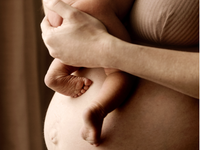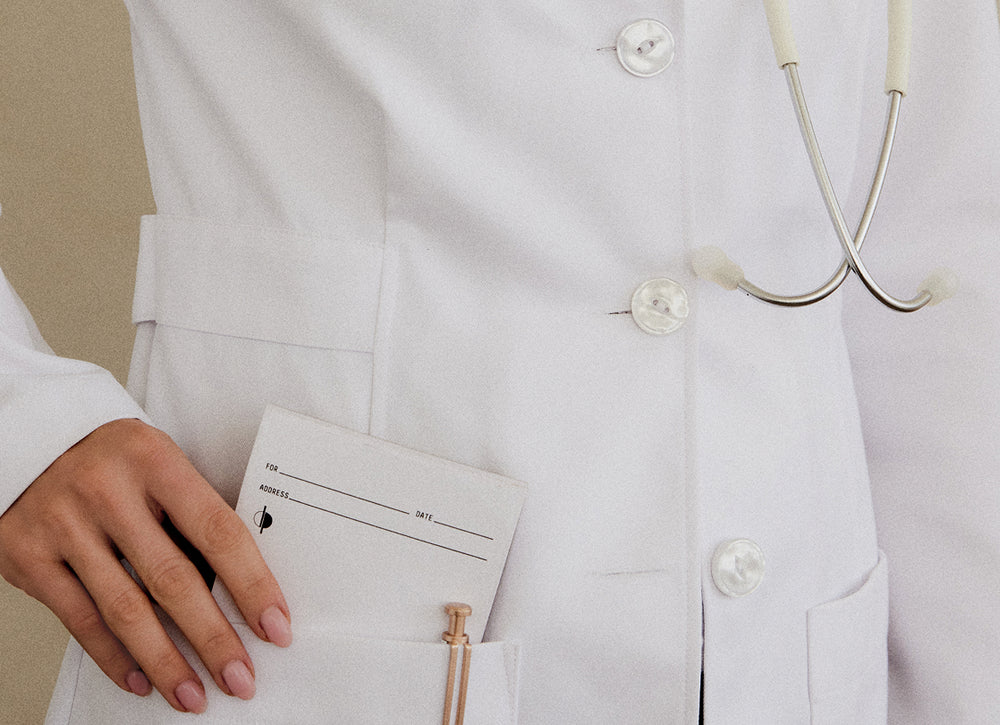Endometriosis is hardly the hot ticket news story of the health and wellness world. Yet perhaps it should be: Endometriosis remains the third leading cause of gynecologic hospitalization in the U.S., and is among the leading causes of hysterectomies performed each year (despite the fact that endometriosis is not cured by such a procedure).1 It can also be a common culprit behind infertility.
“Instead of ignoring it because it’s a tricky or difficult , we need to focus on it,” says OB/GYN and Perelel's medical co-founder Dr. Bayati. “It impacts women’s lives and we need to invest more time into research and education."
The challenge with endometriosis is that its symptoms are varied and can be mistaken for PMS or menstrual pain. But if you're experiencing symptoms that are interfering with your daily life, it's essential to understand what signs might point to endometriosis—and how to advocate for a potential diagnosis.
More than just a "really bad period:" What is endometriosis?
Endometriosis is a condition in which tissue resembling the lining of the uterus (the endometrium) grows in other parts of the body. The most common symptom is debilitating pain in the pelvic and lower back areas experienced during bowel movements as well as during or after sex. While pain often occurs during menstruation, it is also common between periods due to lesions and scarring caused by endometriosis.2
More than just a “really bad period,” endometriosis is a chronic, highly inflammatory disease often impacting the whole body. In the 1930s and 1940s, medical studies found endometriosis in the lungs, bowels, colon, rectum, bladder, lymph nodes, and the cervix, among other places.3
According to Jenneh Rishe, a registered nurse and founder of the nonprofit organization The Endometriosis Coalition, endometriosis has been found in every single organ in the body. In addition to severe pain and bleeding, “The symptoms range from abdominal pain to brain fog and fatigue, to chest pain and shortness of breath, to nerve pain and pain with urinating,” Rishe explains. “The symptoms are all over the map, and they don’t only happen during someone’s period. They can be every single day.”4
From the 1970s through the 1990s, endometriosis was characterized in medical textbooks and mainstream media as a “career woman’s disease” that occurred when (primarily white) women waited to have children. During this time, women were told that pregnancy would cure endometriosis (because the absence of a period mitigates symptoms).5 Gynecologist Doland L. Chatman noted that this bias particularly affected the wellbeing of his African American patients: 40% of those who had symptoms of endometriosis were misdiagnosed with sexually transmitted pelvic inflammatory disease and were not receiving the treatment they needed.6
What are some of the longterm effects of untreated endometriosis?
Patients with endometriosis may face a higher risk for immune and endocrinological challenges, kidney failure, organ and tissue damage, as well as a higher risk for certain cancers. Endometriosis is also closely related to cardiovascular disease and hypertension, as patients with endometriosis are 40% more likely to develop ischemic heart disease and 19% more likely to develop cerebrovascular disease. Due to the potential for such severe—and wide-ranging—chronic symptoms, endometriosis is one of the leading causes of school absences in teen and pre-teen girls.1
Endometriosis can also contribute to fertility challenges. It's why our experts recommend seeking out a fertility doctor if you've had trouble conceiving for more than six months, especially if you're experiencing symptoms—that way, you can rule out (or treat) a condition like endometriosis.
Endometriosis is underfunded and under-researched.
Despite all of this, endometriosis receives just pennies on the dollar in federally-funded spending for research and public health awareness campaigns. The longstanding women’s health research gap—coupled with the fact that endometriosis has various clinical presentations (not to mention that it’s been widely normalized that periods generally suck)—means that a woman may not seek care in the first place, let alone receive an endometriosis diagnosis, for many years. In fact, the average diagnosis timeline hovers around 11 years, with some women going 20 to 40 years without a proper diagnosis. Analyses of US health records and studies indicate that fewer than half of women living with endometriosis have a documented diagnosis.7
Though the path to diagnosis is different for everyone—and, due to less-than-stellar treatment options, not always the massive relief you might hope for—there are a few ways you can advocate for yourself when you need it most:
Trust Yourself.
We’ll say it again: Trust yourself. You know your own body better than anyone else does. If you’re experiencing pain during or after sex, or particularly brutal periods, relay your symptoms to your provider—and don’t be afraid to seek a second (or third) opinion.
Take Notes.
Doctors like data. Track your cycles for 2-3 months, noting when you have pain, how long it lasts, where on your body it occurs, the type of pain (e.g. sharp, dull, etc.), and anything else that feels relevant. It’s especially important to pay attention to if your symptoms are occurring just before or during your cycle, as endometriosis often causes pain outside of a women’s menstrual cycle.
Talk to People.
It can be as comforting to connect with others suffering with endometriosis as it is to speak with those who have received care and are doing better. Seek out community and talk to your friends and family about your experiences and needs. When it comes to medical care, don’t be afraid to get a second opinion if you feel like you aren’t being heard or offered helpful treatments. If your doctor isn’t open to listening to your concerns, it’s totally okay (though, we know, frustrating) to find yourself a new doctor.
Women's bodies are complicated—and we deserve solutions and research that honors those complexities. Learn about our $10 million Pledge to close the women's research gap—so that we can fund more research into conditions like endometriosis.
Resources:
- “About Endometriosis – Worldwide EndoMarch.” Worldwide EndoMarch
- Cohut, Maria. “Endometriosis: Its true impact and why it is so hard to diagnose.” Medical News Today, 30 March 2021
- “Endometriosis - History of Endometriosis.” Seckin Endometriosis Center, 1 October 2021
- Cohut, Maria. “Endometriosis: Its true impact and why it is so hard to diagnose.” Medical News Today, 30 March 2021
- Hudson, Nicky. “The missed disease? Endometriosis as an example of 'undone science.'” NCBI, 13 August 2021
- “The Endometriosis Resource Portal For People Of Color.” EndoFound.
- Freeborn, Jessica, et al. “Endometriosis: Why receiving a diagnosis can take up to 11 years.” Medical News Today.




















